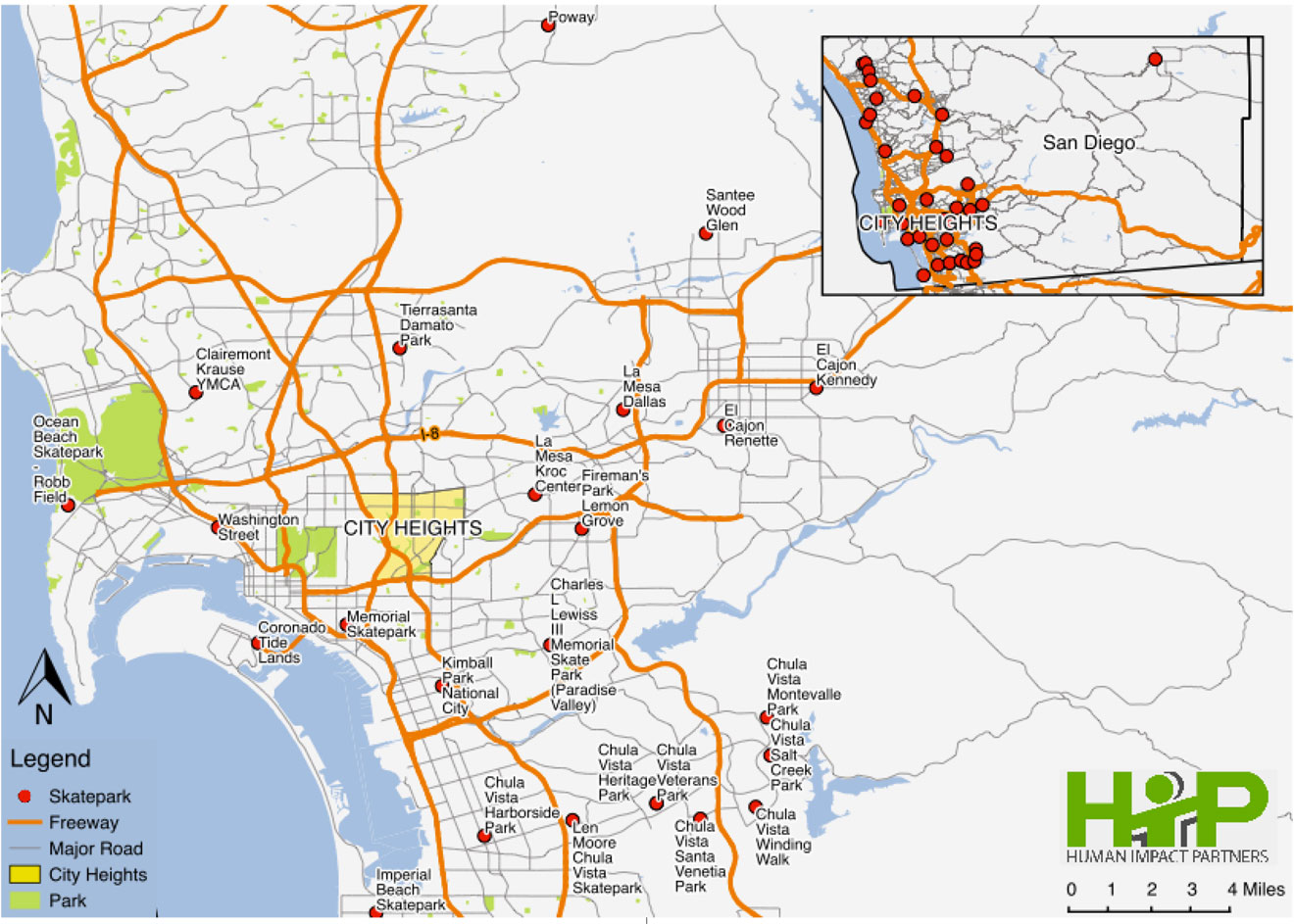
A map of skate park locations in the San Diego area. The map was part of a health impact assessment that helped make the case for a new skate park in the City Heights neighborhood. (Source – p. 15)
A map of skate park locations in the San Diego area. The map was part of a health impact assessment that helped make the case for a new skate park in the City Heights neighborhood. (Source – p. 15)
Last month’s Grantmakers in Health conference in San Diego provided an important reminder on how solid data and research can be the backbone of accomplishing community- and resident-level work.
Mid-City Community Advocacy Network (CAN) is a San Diego-based organization that collaborates with residents and partners in the City Heights neighborhood. Similar to the Globeville and Elyria-Swansea neighborhoods of Denver, City Heights residents are surrounded by highways on all sides, and by many accounts have a chronically complicated relationship with city leaders.
Mid-City CAN has “Momentum Teams,” which are resident-led councils that reminded me a lot of The Trust’s Community Partnerships strategy. Mid-City CAN staffers and community members took us on a site visit to see a new skate park being constructed in the neighborhood. This skate park was made possible through resident collaboration, especially among youth, and used both organizing and policy change strategies to come to fruition.
One of the GIH conference presenters was a local youth leader who discussed using a Health Impact Assessment (HIA) to help evaluate the potential health effects of a particular plan, project or policy before it is built or implemented. HIAs can provide recommendations to increase positive health outcomes and minimize adverse outcomes, and also highlight data and research that might otherwise not enter into planning or dialogue.
In the situation mentioned above, the HIA dispelled common yet false stereotypes of skaters and highlighted the health benefits of skateboarding. The HIA helped make the case for how this new addition to the community could lead to improved health and well-being on many fronts.
HIAs are not as widely used in Colorado to study health impacts of projects or policies as in other states, such as California, for which there are plenty of examples. Mid-City CAN is also just beginning a HIA on how alternatives to traditional criminal justice can reduce the risk of depression, obesity, violence and recidivism.
I have personal experience with HIAs and believe they can truly be a useful, structured tool—capable of being driven by either community members or organizational staff—to lift up health and equity impacts of many projects and efforts. There are a number of examples where residents have driven and conducted the HIA, and such assessments can also sometimes highlight where data may be lacking and prompt additional research.
The Trust has already provided our Community Partnerships staff and local organizers with a wealth of data and research on the places they live and work, and it has helped them fine-tune and drive planning in several locales. Additionally, our Health Equity Advocacy cohort members utilize data in policy advocacy. During the 2016 legislative session, a coordinated effort will result in an analysis of equity implications, impacts on social determinants of health, and possible health risks and outcomes of legislation. Depending on what plans for the future include, HIAs could be useful in both community-level work and policy analysis.
Click here to see a nationwide map of where HIAs have been conducted thus far.